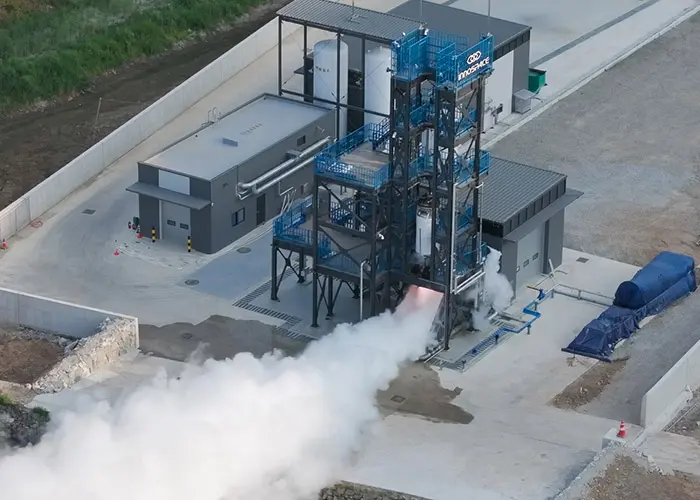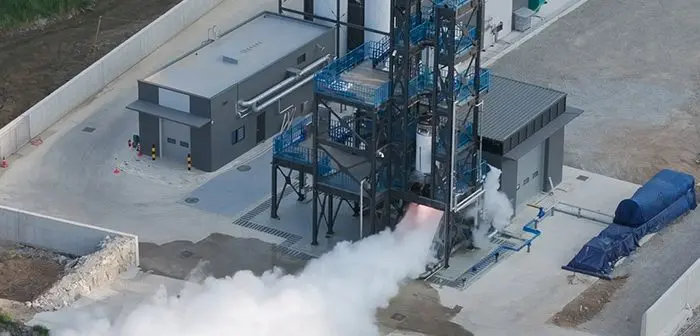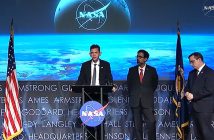
INNOSPACE has completed the qualification test of the second stage for its first commercial launch vehicle ‘HANBIT-Nano’ on July 9th at the company’s integrated test facility in Goheung, South Korea. This milestone marks a significant technical turning point toward the upcoming commercial launch.
HANBIT-Nano is a two-stage launch vehicle, independently developed by INNOSPACE to deploy a payload of approximately 90 kg into a 500 km Sun-Synchronous Orbit (SSO). The first stage is powered by a 25-ton thrust hybrid rocket engine, while the second stage utilizes a 3-ton thrust liquid methane rocket engine.
During the qualification test, the second-stage 3-ton-thrust liquid methane engine successfully demonstrated stable thrust performance of a 300-second burn time, validating the stability of the fuel and oxidizer supply system, structural integrity, and the vehicle’s integrated control system — all of which were validated on the ground as part of the final system verification and validation process. Operating as the upper stage in outer space above 100 km altitude following first-stage separation, the second stage plays a pivotal role in accurately injecting the customer’s satellite into its designated orbit, serving as a key system for overall mission success.
The second stage of HANBIT-Nano incorporated INNOSPACE’s proprietary liquid methane rocket engine, marking the first time a South Korean private space company has independently completed a comprehensive qualification of a flight-ready upper stage system. For the first time globally, an electric pump was implemented in a liquid methane rocket engine, simplifying the propulsion architecture while enhancing operational reliability. In a first for South Korea’s private space industry, INNOSPACE pioneered the application of an integrated stainless-steel tank with a common bulkhead design, capable of withstanding cryogenic conditions and incorporating subcooling technology, that separates fuel and oxidizer — a high-level structural innovation that enables system simplification and weight reduction. This successful test not only represents a milestone achievement for the private space sector but also signifies a key technological leap for South Korea’s launch vehicle development capabilities.
“With the successful qualification test of the second stage, we have completed development of the upper stage for the HANBIT-Nano launch vehicle,” said Soojong Kim, Founder and CEO of INNOSPACE. “This achievement not only demonstrates our accumulated technological expertise and operational test capabilities but also marks a highly symbolic and meaningful milestone that signifies our entry into the final phase toward commercial launch readiness.”
“All of our employees are fully committed to completing the first-stage qualification test — the final milestone before commercial launch — and we will spare no effort to ensure a seamless and on-schedule mission in the second half of this year.” He added.
The final launch schedule of HANBIT-Nano will be confirmed after the successful qualification of the first stage and subsequent approval from the Korea AeroSpace Administration (KASA).
[Photo] INNOSPACE ‘HANBIT-Nano’ Second Stage Qualification Test





